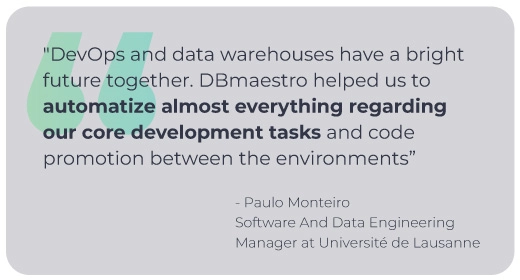DevOps practices are essential for organizations striving to deliver high-quality software at scale. A critical component of successful DevOps implementation is the ability to gain deep insights into system behavior and performance. This is where DevOps observability and monitoring come into play, providing teams with the necessary tools and practices to ensure system reliability, performance, and security.
What You Will Learn
In this blog post, you will discover:
- The definition and significance of DevOps observability in modern software development.
- Key differences between observability and monitoring, and how they complement each other.
- The three main pillars of observability: logs, metrics, and traces.
- Best practices for implementing effective DevOps observability strategies.
What is DevOps Observability?
DevOps observability refers to the ability to understand and analyze the internal state of a system based on its external outputs. It goes beyond traditional monitoring by providing a more comprehensive view of the entire system, allowing teams to quickly identify and resolve issues, optimize performance, and make data-driven decisions.
Observability has become increasingly important in modern DevOps environments due to the growing complexity of distributed systems, microservices architectures, and cloud-native applications. By implementing robust observability practices, organizations can:
- Gain real-time insights into system behavior
- Proactively identify and address potential issues
- Improve system reliability and performance
- Enhance collaboration between development and operations teams
Key Differences Between Observability and Monitoring in DevOps
While observability and monitoring are often used interchangeably, they serve distinct purposes in the DevOps ecosystem. Understanding these differences is crucial for implementing effective strategies:
Monitoring:
- Focuses on predefined metrics and thresholds
- Provides alerts when known issues occur
- Offers a limited view of system health
Observability:
- Enables exploration of unknown issues
- Provides context-rich data for troubleshooting
- Offers a holistic view of system behavior
Observability complements monitoring by providing deeper insights into system internals, allowing teams to investigate and resolve complex issues that may not be apparent through traditional monitoring alone.
Pillars of DevOps Observability: Logs, Metrics, and Traces
Effective DevOps observability relies on three key pillars: logs, metrics, and traces. Each of these components plays a crucial role in providing comprehensive system visibility:
Logs:
- Detailed records of events and activities within the system
- Useful for debugging and forensic analysis
- Provide context for understanding system behavior
Metrics:
- Quantitative measurements of system performance and health
- Enable trend analysis and capacity planning
- Help identify performance bottlenecks and anomalies
Traces:
- Track requests as they flow through distributed systems
- Provide insights into system dependencies and latencies
- Help identify performance issues across service boundaries
By leveraging these three pillars, DevOps teams can gain a comprehensive understanding of their systems, enabling them to quickly identify and resolve issues, optimize performance, and make data-driven decisions.

Best Practices for Implementing DevOps Observability
To successfully implement DevOps observability, organizations should consider the following best practices:
- Implement Automated Instrumentation:
Leverage automated instrumentation tools to collect observability data without manual intervention. This ensures consistent and comprehensive data collection across all system components. - Adopt a Unified Observability Platform:
Implement a centralized observability platform that integrates logs, metrics, and traces from various sources. This provides a single pane of glass for monitoring and troubleshooting.
- Establish Clear Observability Goals:
Define specific observability goals aligned with business objectives. This helps focus efforts on collecting and analyzing the most relevant data.
- Foster a Culture of Observability:
Encourage a culture where all team members are responsible for system observability. This promotes proactive problem-solving and continuous improvement.
- Implement Distributed Tracing:
Utilize distributed tracing to gain insights into request flows across microservices and identify performance bottlenecks.
- Leverage Machine Learning and AI:
Implement machine learning algorithms to detect anomalies and predict potential issues before they impact users.
- Practice Continuous Improvement:
Regularly review and refine observability practices to ensure they remain effective as systems evolve.
- Implement Robust Alert Management:
Develop a comprehensive alert management strategy to ensure that the right people are notified of critical issues without causing alert fatigue.
- Prioritize Security and Compliance:
Ensure that observability practices adhere to security and compliance requirements, particularly when dealing with sensitive data.
- Integrate Observability into CI/CD Pipelines:
Incorporate observability checks into continuous integration and deployment pipelines to catch issues early in the development process.
Key Takeaways
- DevOps observability provides deep insights into system behavior, enabling teams to quickly identify and resolve issues.
- Observability complements traditional monitoring by offering a more comprehensive view of system internals.
- The three pillars of observability – logs, metrics, and traces – work together to provide a holistic understanding of system performance.
- Implementing best practices such as automated instrumentation, unified platforms, and a culture of observability is essential for success.

Conclusion
In conclusion, DevOps observability and monitoring are critical components of modern software development and operations. By implementing robust observability practices, organizations can gain deeper insights into their systems, improve reliability, and deliver better experiences to their users. As the complexity of software systems continues to grow, the importance of observability in DevOps will only increase, making it an essential skill for teams looking to stay competitive in today’s fast-paced technology landscape.






